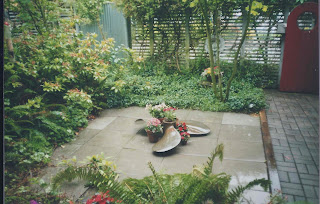A converted rum-runner did service along the rugged Vancouver Island coast as a motor launch in the modest fleet maintained by the British Columbia Provincial Police. Photograph courtesy B.C. Archives.
Special to The Globe and Mail
August 18, 2011
At dawn, Joseph Spears trundled downstairs to the home office, casting a glance into the front courtyard.
Something was amiss.
“That’s kind of strange,” he thought to himself. “There’s no propeller.”
Eleven years earlier, four burly loggers lugged a brass propeller into the yard on the waterfront in Horseshoe Bay, where it had rested ever since. Flowerpots were placed between the blades to brighten its appearance.
 |
| Joseph Spears |
Later in the day, the West Vancouver police issued a press release. “At 0822 hrs,” the department was “advised of a theft complaint.” Missing was a brass propeller. Estimated worth — $5,000.
So far, so ho-hum. Brass and copper items are purloined every day to be sold as scrap.
The police had one other detail.
The propeller came from a vessel “once owned by infamous Al Capone in the days of rum running back east.”
In the dog days of summer, the notion of a Capone connection generated plenty of local media coverage. The hunt was on for an artifact of Prohibition-era shoot-’em-ups.
The propellor had been scavenged from the Texada, a 28.3-metre (93-foot), wooden-hulled vessel that ran aground in August, 2000. The ship, owned by a forest services company, struck a rock in Dolomite Narrows on the south side of Burnaby Island in the Queen Charlottes (now Haida Gwaii).
As the tide went out, the vessel listed sharply to port. The accident site was part of a protected marine conservation area in the middle of Gwaii Haanas national park. The crew joined park wardens and contracted private operators to pump diesel fuel off the stricken vessel. After three weeks, a towing company hauled the Texada to Vancouver, where it was scrapped. Mr. Spears, who had represented a company involved in the salvage, wound up with the propeller.
The schooner was built in 1930 in the renowned shipyards of Shelburne, N.S., where it was outfitted with a modest, six-cylinder engine, standard for fishing vessels. The owner soon after registered it in Newfoundland, a British colony, at which time it was powered by a pair of 12-cylinder motors.
 |
| Flower pots decorated the propeller before the theft. |
After being seized by the Dominion Government, the vessel was loaned to anglers and members of the New York Zoological Society (reminding one “unpleasantly of various Baltic Sea cargo boats”) before winding up on the West Coast in 1938. The rum-runner became the pride of the modest fleet of the British Columbia Provincial Police. In a Victoria shipyard, according to the historian R.G. Patterson, the hold was transformed into sleeping quarters for the crew with cells for five prisoners. An aft fuel tank was removed to make way for a sea-going courtroom billed as the world’s smallest (“a virtual broom closet,” according to one account).
Police Motor Launch No. 14 patrolled the rough waters surrounding Vancouver Island, pulling into isolated outports and reserves. After four years, the patrol vessel joined the Fishermen’s Reserve (the Gumboot Navy) of the Royal Canadian Navy under yet another name, HMCS Ripple. It spent the last three years of the war with an eye out for Japanese submarines.
In 1945, the government sold the boat to B.C. Packers Limited, which gave it yet another refit, this time to aid in fish packing. The company also gave the vessel the name it would carry to the scrap yard decades later.
It was the propeller of the ex-Margaret S II, the ex-P.M.L. #14, the ex-HMCS Ripple, and the ex-Texada that wound up in the yard of 6438 Bay St. in West Vancouver. Next door is the Troller Pub, a fitting neighbour for a rum-runner’s prop.
Yet, the evidence of a Capone connection is slim. In an insurance dispute involving the Texada, John Hargrave, a prothonotary of the Federal Court of Canada, issued an order in which he described having been shown the boat many years earlier. A marine engineer “showed me a cabin with a diagonal row of holes in the lining,” telling him that “they were machine gun bullet holes and that he knew for certain she had been a rum runner, owned by Al Capone.”
The Chicago mobster went to prison on tax evasion charges in 1931, the same year in which the vessel would likely have been first used in a criminal enterprise.
The West Vancouver police quickly recovered the prop, thanks in part to media coverage fueled by the association with a notorious gangster.
A "broom closet" courtroom was placed in the aft of Police Motor Launch No. 14, commanded by the British Columbia Provincial Police. The converted rum-runner is believed to have once been owned by the notorious gangster Al Capone.
The Texada rests on a rock after running aground in a national park in what is now Haida Gwaii.







No comments:
Post a Comment